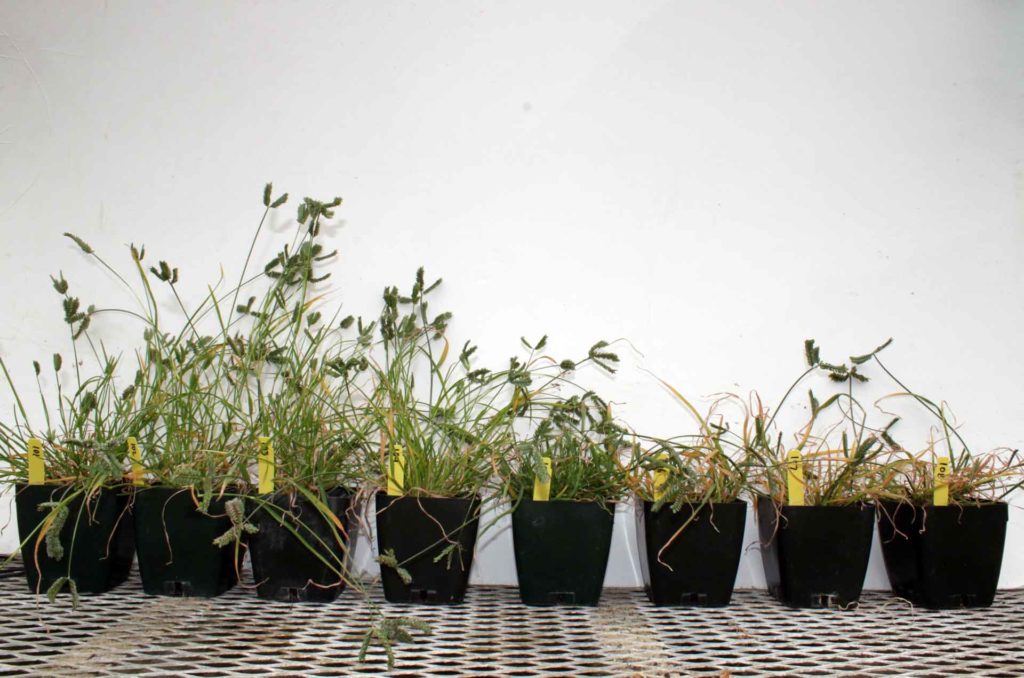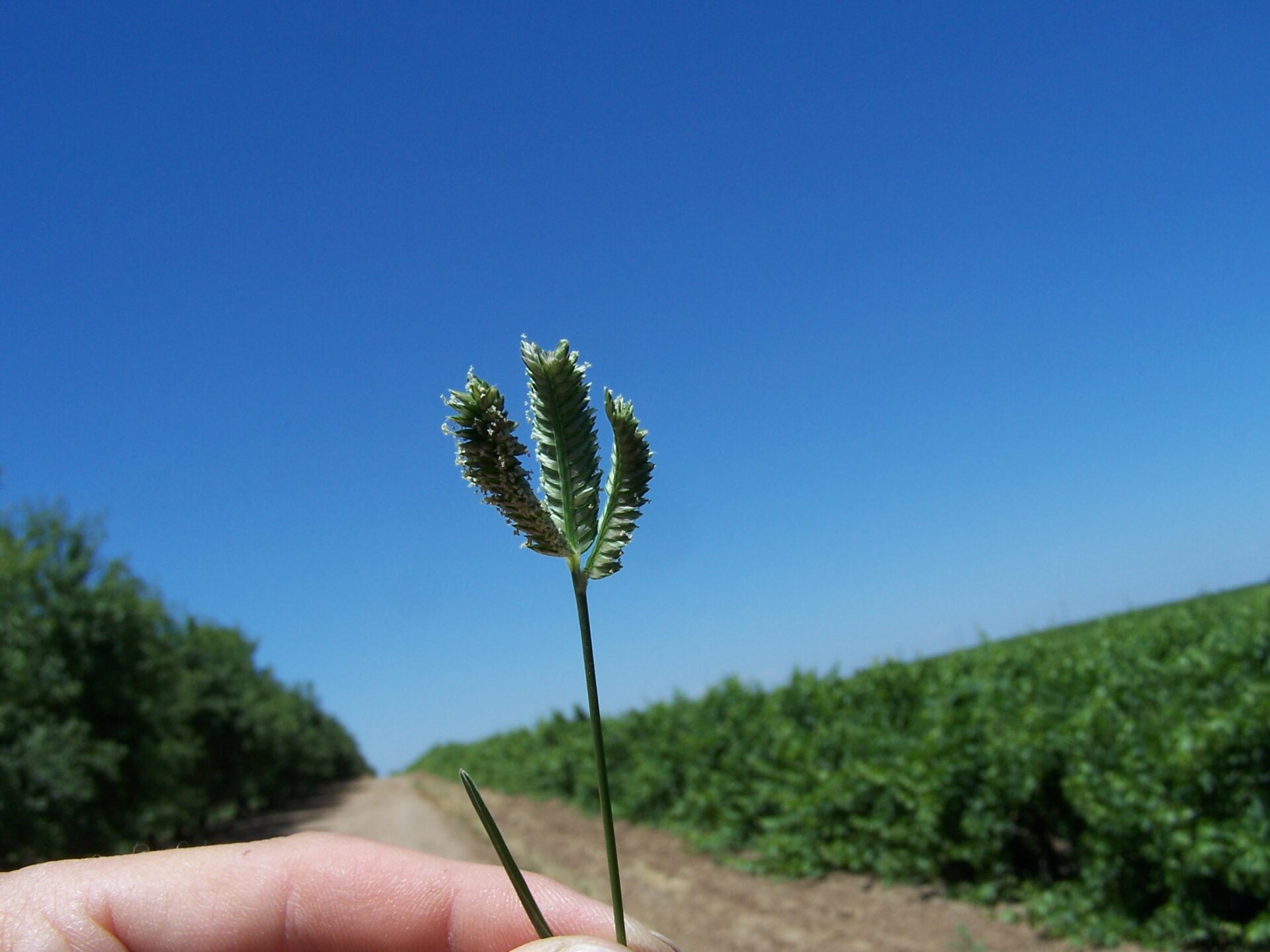“If you have it in an orchard, it’s going to be your number one weed problem.”
Brad Hanson, weed science specialist at University of California Davis is speaking about threespike goosegrass, a perennial weed that can pose problems in newly established almond and walnut orchards due to its ability to compete for water and nutrients and interference with irrigation uniformity. It is also resistant to glyphosate.
Hanson said this weed is more common in the Sacramento Valley and northern San Joaquin Valley. It is not ubiquitous, but if a grower has it, early control is best, he said, before big patches are growing.
Threespike goosegrass was first reported in California in 1967. It is a low growing coarsely tufted warm season grass. It is distinguished from goosegrass by its smaller size and having fewer and shorter spikes.
Hanson said this light-loving summer grass infests young orchards and can also become established on mature orchard edges and where there are canopy gaps.
Field trials conducted by horticulture intern Drew Wolter and Hanson confirmed that threespike goosegrass is extremely tolerant to glyphosate. The post emergence treatments began in May and were assessed weekly for one month. Roundup Weathermax applied at a higher rate of 2 qt./acre only achieved 54 percent control and many plants recovered and produced new shoots and panicles. Hanson said that established plants were almost impossible to kill. The most effective post emergent products were Fusilade, SelectMax and Poast.

Pre-emergent controls had higher success rates in the field trials, but timing of application was critical for best results.
The trials were conducted last year in a walnut orchard on the Chico State University Farm and in a Livingston area almond orchard. Both sites had medium to high infestations.
Multiple preemergent herbicides provided adequate control of threespike goosegrass. Hanson said the highest rate of success came with a sequential application of Alion followed by Prowl H20. He attributed the control success to the second application timing closer to germination and emergence.
During the trial, Hanson said that treatment sites were assessed once a month, starting after the January application and continuing for five months. The sequential treatment results showed that a management plan that includes a later spring application helps minimize seedling growth.
Overall, the trials determined that in areas where threespike goosegrass was gaining ground the best control was achieved by shifting some of the preemergent herbicides to target germination rather than hitting the weed during the summer.
Biology of threespike goosegrass, control goals and weed management tools available are important considerations in orchard weed management. Rotating herbicide modes of action and monitoring after herbicide application to prevent resistance or tolerance is also important.
More information on integrated weed management can be found on the UC IPM website.

Cecilia Parsons
Cecilia Parsons has lived in the Central Valley community of Ducor since 1976, covering agriculture for numerous agricultural publications over the years. She has found and nurtured many wonderful and helpful contacts in the ag community, including the UCCE advisors, allowing for news coverage that focuses on the basics of food production.
She is always on the search for new ag topics that can help growers and processors in the San Joaquin Valley improve their bottom line.
In her free time, Cecilia rides her horse, Holly in ranch versatility shows and raises registered Shetland sheep which she exhibits at county and state fairs during the summer.
















